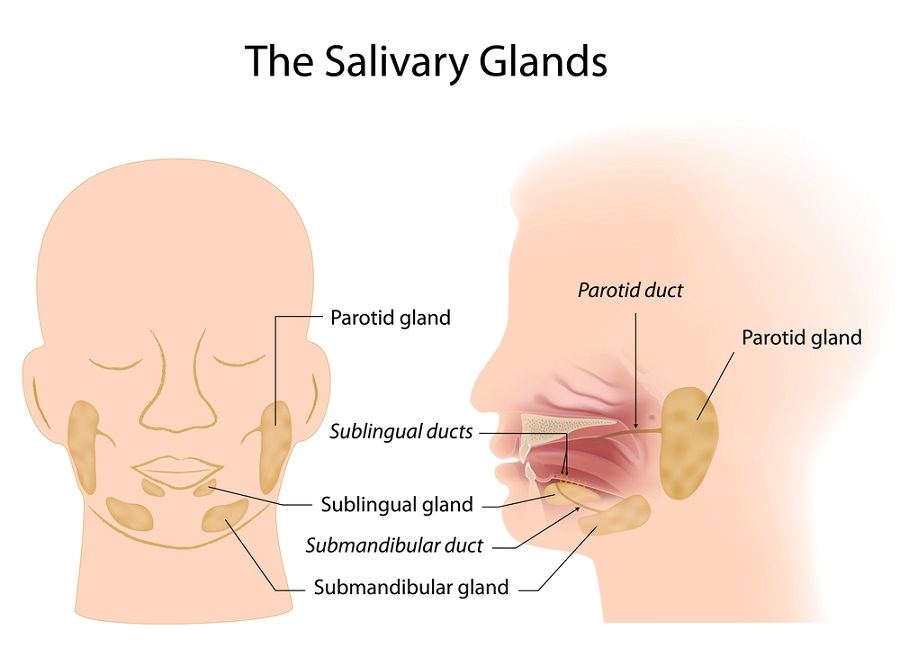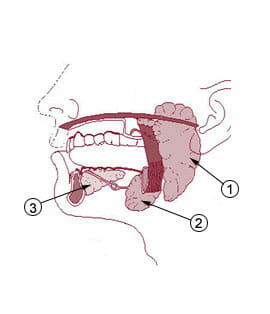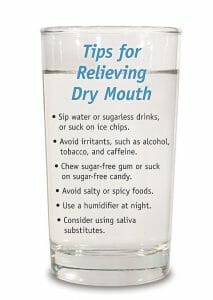Definition
A salivary gland is a tissue in our mouths that expels saliva. You can feel your salivary glands activate when you eat something really sweet. As exocrine glands, they expel saliva into our mouths by way of ducts. Each day, our glands produce as much as a quart of saliva.
Overview
Saliva is a mixture of water, mucus, antibacterial substances, and digestive enzymes. One of the most recognizable digestive enzymes in human saliva is amylase. This enzyme is able to break down the starch in our food to simpler and more easily digestible sugars like glucose and maltose. Whenever we chew, we are activating salivary glands in preparation for the breakdown of our meal.

Saliva has a number of functions within the digestive system beyond breaking down starches. Saliva also helps keep our mouth and digestive tract lubricated, which ensures it functions properly. Salivary glands typically function without issue, but a blockage or infection within the salivary glands can cause significant pain and discomfort.
The salivary glands are located in several areas around the mouth and have ducts connected to both the upper and lower jaw. This ensures that saliva evenly coats the inner lining of the mouth. You can feel the end of these ducts just below your tongue and along the inside of your upper lip. If you eat something with a lot of starch or sugar, you can also feel the salivary glands activating and releasing saliva.
Salivary Glands Function
Briefly, saliva itself serves many uses. As the only secretion of our salivary glands, it is helpful in creating the food bolus, or the finely packed ball of food that we roll inside our mouths. This shape facilitates its safe passage through our alimentary canal. Saliva has lubricating properties that are protective, as well. Saliva protects the inside of our mouths, our teeth, and our throats as we begin to swallow the bolus. It also cleanses the mouth after a meal and dissolves food into chemicals that we perceive as taste.
Salivary Gland Location
Salivary glands come in three types: the parotid, sublingual, and submandibular glands. Each is aptly named after the area in the oral cavity in which it is located. Let’s begin this discussion with the parotid gland.

The diagram depicts the three types of salivary glands in the mouth: 1) parotid glands, 2) submandibular gland, 3) sublingual gland.
Parotid Glands
The two parotid glands are located within each of our cheeks. Parotid glands are the largest type of salivary gland. They account for up to twenty percent of the saliva in our oral cavity. Their main role lies in facilitating mastication, or “chewing,” and in commencing the first digestive phase of our food. The parotid gland is notably labeled a serous type of gland. Serous glands are those that secrete protein-rich fluid, which in this case is an enzyme-rich suspension of alpha-amylase.
Submandibular Gland
Next, the submandibular gland is located close to our mandible. This is the movable part of our jaw. In essence, this gland lies on the floor of our mouths. Since it is superficially located, we can feel it if we place our fingers about two inches above the Adam’s apple. It is the second-largest salivary gland and produces the most saliva (up to 65%). It is considered a mixture of serous and mucous glands since the suspension is both rich in enzymes and gooey mucus that is released into the oral cavity through the submandibular ducts.
Sublingual Glands
Lastly, sublingual glands are located under the tongue. They are the smallest and most dispersed salivary gland. They secrete mostly mucus, which exits directly through the Rivinus ducts. Only a minimal (~5%) amount of saliva in the oral cavity comes from these salivary glands.
Salivary Glands Innervation
Salivary glands are innervated by both branches of the autonomic, or “involuntary,” nervous system. This is commonly associated with the fight or flight response, as well as the feeding and resting responses. When we see a bear, for instance, we trigger our sympathetic response. This threat triggers the release of norepinephrine, a rise in our heart rate, dilation in our eyes, and notably, slowed digestion and a dry mouth.
This means that whereas sympathetic stimulation normally overstimulates its target, it inhibits the salivary gland. So, we produce less saliva. In contrast, parasympathetic stimulation of the salivary gland renders a heavy flow of saliva. The parasympathetic branch of the somatic nervous system is responsible for responses such as eating, growing, and reproducing.
Salivary Glands Disorders
There are symptoms that may signal a compromised salivary gland. This includes gland swelling, fever, a foul taste in the mouth, and dry mouth, or overactive glands. Measures can be taken to lessen the effects of dry mouth (listed below).

The figure lists the ways in which the symptoms of dry mouth can be lessened.
Swollen glands are often caused by “salivary stones,” or buildup of crystallized saliva, that can clog the gland from releasing saliva. This causes pain, and unless the blockage is cleared it can infect the gland. Salivary glands can also be painfully blocked by a bacterial infection.
Staphylococcus aureus is the most common bacterium that infects it. If left untreated, the bacterium will cause fever, severe pain, and an abscess or pus. Several other bacteria commonly infect the salivary glands. Viruses can also infect the glands. A tumor can likewise block salivary gland tissue. Most tumors are benign, but salivary gland cancer is a rare type of cancer that develops in 1 of 100,000 people each year.
Quiz
